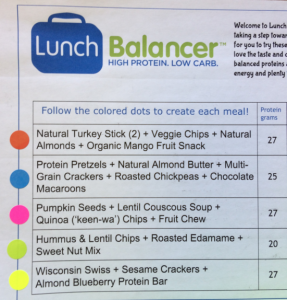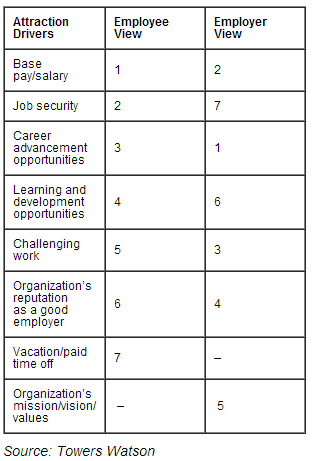I get pimped weekly to review products/services/books/etc., and I actually do a bunch of reviews. I have a couple of rules to do reviews:
1. Whatever it is you want me to review, I need full access. You want me to review your recruiting tool, give me access to the system and let me play with it. You would be amazed at how many folks won’t allow this! “Oh, you want to say great things about something I’ve never used?!” Yeah, that doesn’t work.
2. Book reviews are tough, I just don’t have that much time to get through your boring book. That being said, if you send me a copy I might try to get through the first chapter. If you send me a link to an electronic version (i.e., pdf), I’ll never read one word of it. I’ve bought one e-Book in my life, it was Laurie Ruettiman’s I Am HR, and she had to walk me through how to download it onto my iPhone.
3. If you want me to review a real product, like the one I’m doing below – Lunch Balancer, you have to actually send me the product! Seems simple, you send me product, if I like it I’ll write about it. I don’t like, I also might say something about it. If you never send me the product, I’ll never say anything about it.
4. If a hundred dollar bill somehow slips into the product as you ship it too me, that never hurts your chances of getting reviewed.
On to the real Product Review –
Lunch Balancer
Lunch Balancer contacted me about seeing if I would have interest in reviewing their product. They offer “nutritionally-balanced portion-controlled meals”, high protein, low carb. The design is that they’ll actually ship to your office a box that has five meals read to go for about $6-6.50 per meal, depending on which way you go. They are targeting the health conscious desk jockey that is getting fat by sitting around all day, not moving enough and topping that off by having some sort of super-sized fast food meal at lunch. Basically, they were targeting me!
The box they sent me looked almost identical to their picture on the website:

My first impression was they sent a box of samples. The next impression was this was all Hippie/Tree Hugger food, I was not going to like this! Gluten free, organic, vegan, etc. were just a few of the titles I quickly scanned. The box looked like a bunch of samples you picked up at a how to survive by eating tree bark convention. But they actually plan out the menu each day, and color code each item so you know which items go for which day. Here’s what that looks like:

To be completely honest, I did the first two meals on two different days, let my staff kill the rest of the food after that. Here’s my take.
Meal #1 – Turkey sticks, veggie chips, natural almonds and organic mango fruit snacks
Turkey sticks were like Slim Jims, but healthy, but tasted like Slim Jims. I like Slim Jims, so the experiment to healthy eating was going great! The 100% veggie chips, made mostly of peas, actually tasted like regular salted chips! Heck, this was going to be easy! I’m a little sketchy on almonds that are in a cookie, candy bar or have wasabi spices baked into them, but I have to say these were actually crunchy and tasted good. The mango fruit snacks were also good.
When I first saw the amount I was going to eat, I thought no way is this going to fill me up, but it did! Meal #1 done, and I was impressed.
Meal #2 – Protein Pretzels, natural almond butter, multi-grain crackers, roasted chickpeas and Chocolate Macaroons
The protein pretzels had a cinnamon sugar spice on them, and they were really good. The biggest hit was the natural almond butter and crackers. Since I never ate almond butter before I had no idea it was just peanut butter, but made with almonds! I’m becoming a healthy eater! The roasted chickpeas were crunchy and salty, and reminded me of the corn nuts you get at gas stations. The chocolate macaroons, which I left until the end, because I knew those would be good, were absolutely awful! Yep, one miss, they tasted like little mud balls in my mouth. Again, I was full after eating Meal #2.
I would definitely recommend Lunch Balancer to companies looking to give their employees a healthier option. It’s fairly inexpensive, and better for you. When you think about your time, gas and normal lunch expense. $6 per meal is pretty cheap. Make it healthy on top of that, and it’s a win-win!
Check them out at www.lunchbalancer.com
Lunch Balancer did not pay me for this review, but they did send me a free sample box to test their product.




